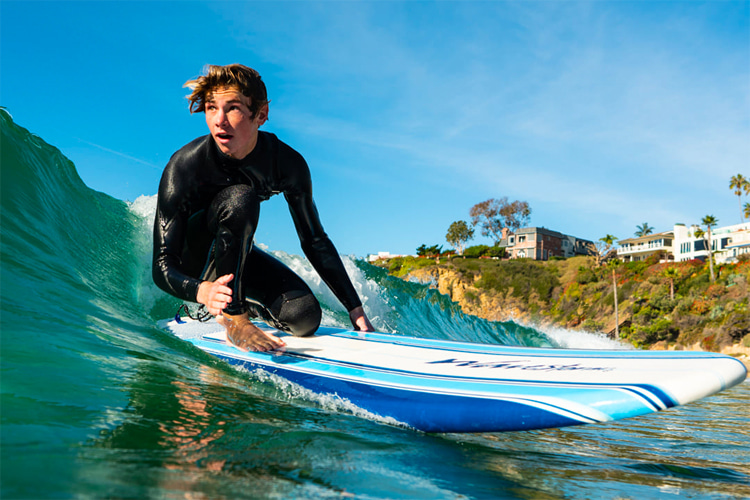The Wavestorm could very well be the people's surfboard. Here's the story of a piece of equipment that has introduced millions to surfing.
Some will say it is the best thing that ever happened to the surf industry since the wetsuit; others blame it for driving surf shops out of business.
Wavestorm is a controversial surfboard that has now cemented its place in the always tight-knit and closed surfing community and culture.
But how did this popular board make it through the surf industry?
The Wavestorm revolution was one of the chapters that led to the commercialization of surfing as a global sport.
"In the early 1990s, after a century-long journey, modern surfing's historical arc began to split in two," notes Matt Warshaw, author of "The Encyclopedia of Surfing."
"By the mid-2000s, wave-riding appeared almost schizophrenic."
"At one extreme, everything was fast, loud, and shape-shifting, with millionaire professionals, surf-themed PlayStation video games, and live-streamed event coverage."
"At the same time, surfing, in general, was more settled and inclusive - even quieter - than it had ever been. And why not?"
"At the dawn of the 21st century, surfing was no longer by any stretch of the imagination a young sport. Parents surfed with their children. Women and girls were, at last, taking their rightful place in the lineup," concludes Warshaw.
The birth of Wavestorm was inevitable. It was only a matter of time.
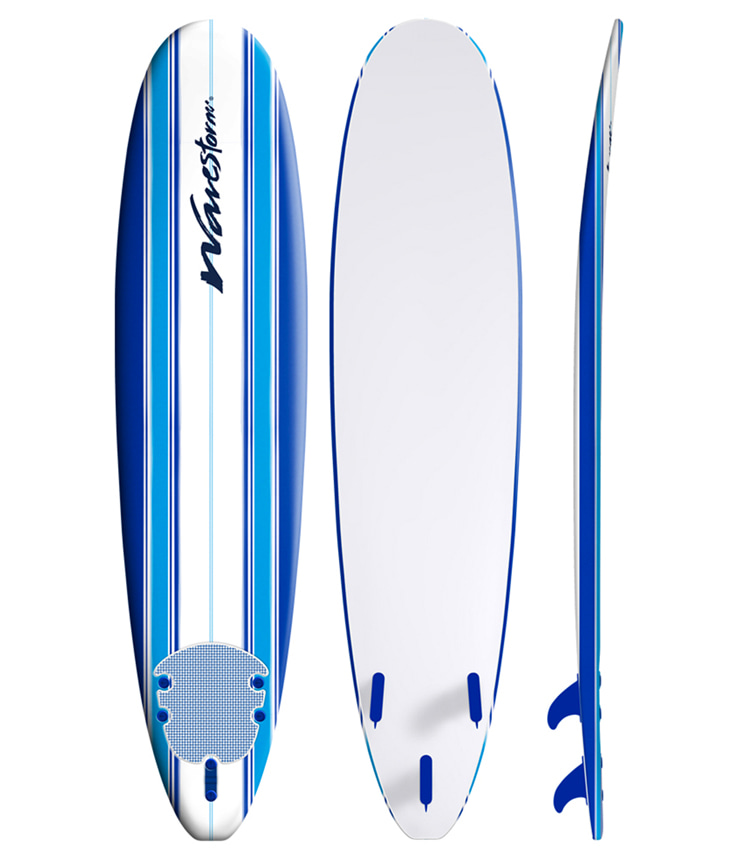
What is the Wavestorm?
Wavestorm is an affordable, entry-level, computer-shaped, machine-crafted, and mass-produced surfboard.
The classic 8-foot soft-top surfboard model was launched in 2006 by AGIT Global, a boardsports company from Taiwan.
The concept was co-created by John Yeh, businessman and CEO of the Asian firm, and Matt Zilinskas, the company's chief business development officer (CBDO).
Zilinskas joined AGIT Global in 2004.
Since then, he has been in charge of prospecting, setting up, managing, and building customer partnerships.
The San Francisco Bay professional has also been developing new product ranges specific to customer requirements, including the best-selling surfboard of all time.
When it saw the light of day, during its test program, Wavestorm was sold exclusively at American wholesale retailer Costco stores in California, Santa Cruz, for $99.99.
The goal was to get an affordable surfboard made from a tweaked sandwich of expanded polystyrene (EPS) foam ready for a surfer's first stand-up wave-riding experience.
The boards were a hit in Golden State waters, and soon, the company was mass-producing and expanding into Oregon, Florida, New Jersey, etc.
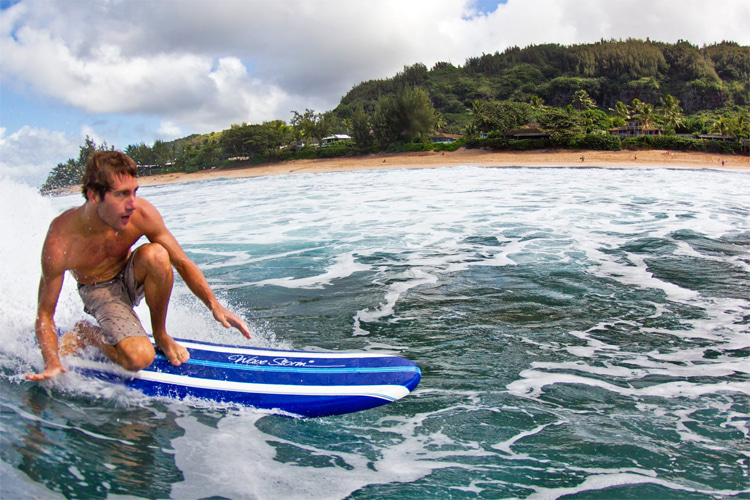
A Commercial Success
Today, the Wavestorm sells for around $250.
Despite the price increase, it is still roughly three times cheaper than a similar competing hand-shaped board and features inexpensive core materials and add-ons.
Since it was released in the market, it sold hundreds of thousands of units and became surfboard shapers' worst nightmare.
The "people's surfboard" was available in Costco stores and warehouses, alongside food, drinks, electronics, generic and prescription drugs, clothes, and gas.
In the first decade, Wavestorm sold well over 100,000 boards.
It is also the weapon of choice for many surf school owners, instructors, and adaptive surfers to get into the water.
Wavestorm is highly forgiving and fun.
It has good paddling power, turns nicely, and is nearly indestructible thanks to its thin membrane of absorbent foam that bends forever without breaking.
The AGIT Global surfboard is one of the market leaders, selling several times more planks annually than the world's largest surfboard brands.
The company's best-selling surfboard is a high-volume, low-profit-margin product.
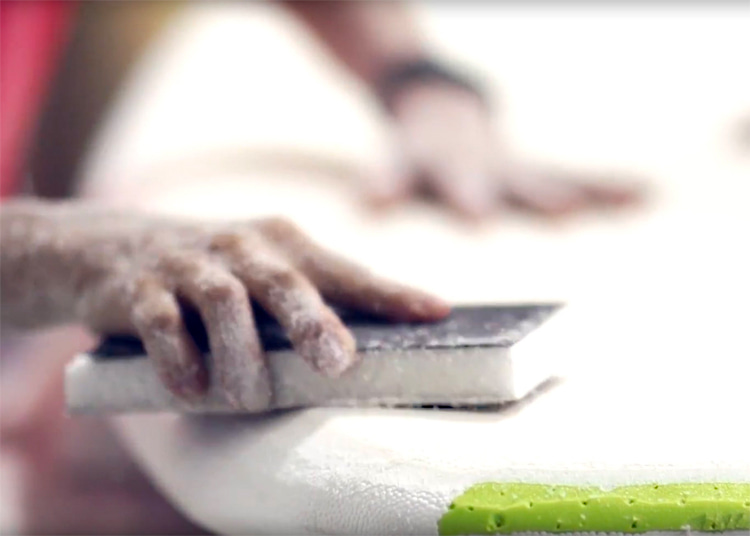
From Kook to Kitsch
When Costco launched Wavestorm, the budget board became the symbol of surfing as a mainstream sport.
For the most conservative and purist riders, the low-cost wave-riding craft represented surfing's ultimate sell-out, cash-in capitalist moment.
In the mid-2010s, Wavestorm entered surf culture's ever-conservative sphere. Strange as it might seem, the cheap funboard became kitsch, cool, and a somehow indie wave-riding craft.
Professional surfers started riding the Wavestorm for fun and introducing their kids, friends, and relatives to surfing.
The affordable beginner surfboard also became the go-to equipment for party waves, pounding shore break stunts, and eye-catching surfboard wave transfer experiences.
Photos of recreational surfers getting barrelled on the blue and white striped foam board invaded social media channels.
Meanwhile, the Wavestorm brand expanded its line of products.
Today, the legendary label produces the classic funboard, longboards, shortboards, skimboards, and gear.
The user-friendly board has also been revamped over time.
The materials have improved - the sandwich of foam formula features different layers, and there are new templates, color schemes, and additional fin options.
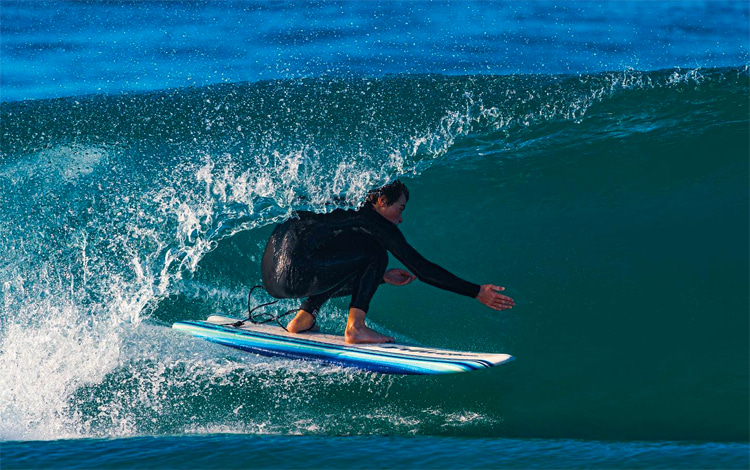
America's Most Popular Surfboard
Surf industry professionals believe that the Wavestorm phenomenon will pass, just like the sport went through "Gidget."
It was once named the "best worst board of all time," but the truth is that Wavestorm quickly became America's most popular surf craft.
Despite the bad rap, the safe and buoyant pop-out surfboard is responsible for introducing a carefree attitude and experience back to surfing.
The blue-deck-with-white-stripes plank with a liberal return policy even has a Wavestorm World Championship event run by fans and pros.
It is also the perfect equipment for dog surfing enthusiasts and can be quickly ordered via Amazon.
If you own more than a handful of surfboards, the chances you have a Wavestorm on your quiver are pretty high.
In the end, if Jamie O'Brien can get barreled at Pipeline on this emblematic wave-riding craft, you can have fun with it in ankle-high waves.
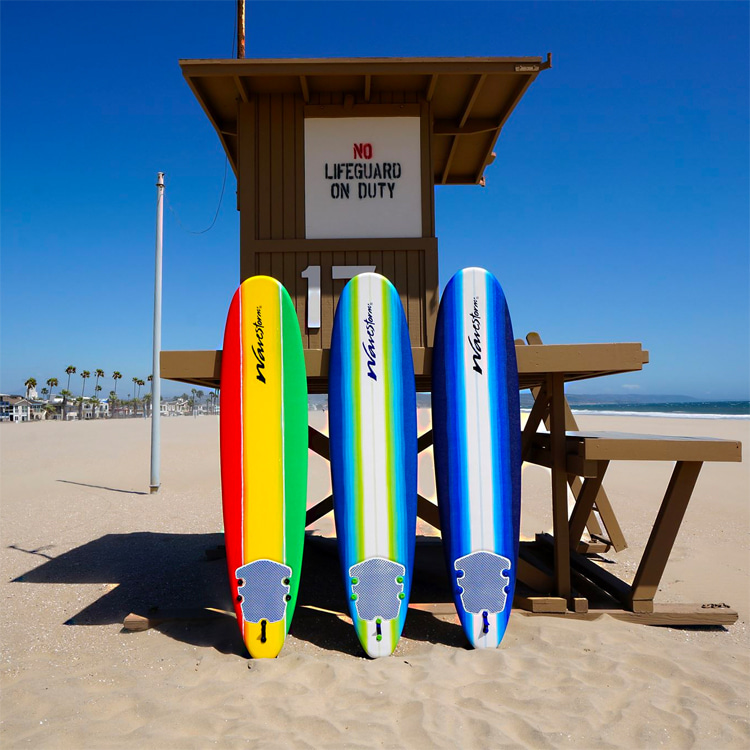
A Virtuous Circle
Wavestorm remains a sensitive topic within the surfing world.
The critics accuse it of betraying surfing's essence and spirit and destroying the businesses and jobs of industry veterans.
Recreational surfers are also split between those who think it's a poseur/beginner board that should be out of the world's finest breaks and those who just want to learn or have fun with different equipment.
The surf shop owners' mindset has also evolved through time.
Some now refuse to stock soft-top surfboards; others believe Wavestorm-like planks help get new surfers into the lineup and market.
Could cheap foam surfboards be the starting point for millions of surfers before they move on to higher-end options?
Whether you see it as a disposable bath toy or a soft-top beginner surfboard, the truth is that Wavestorm disrupted the market forever.
